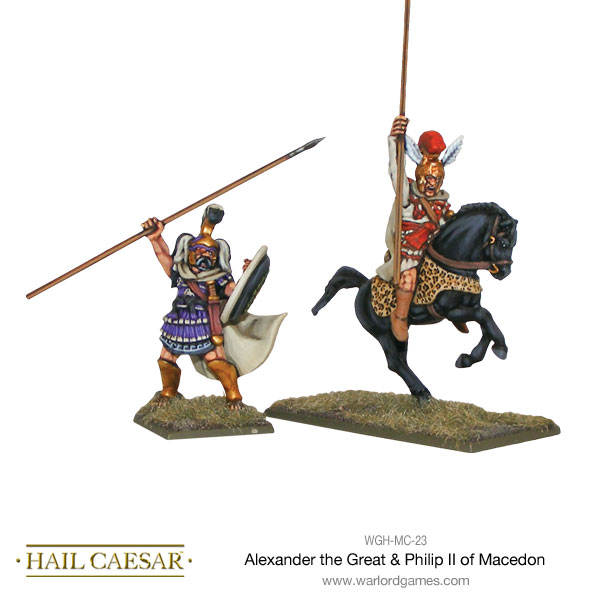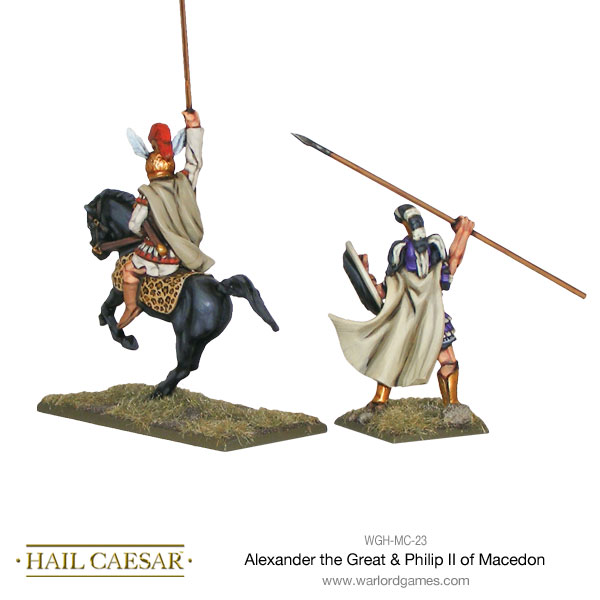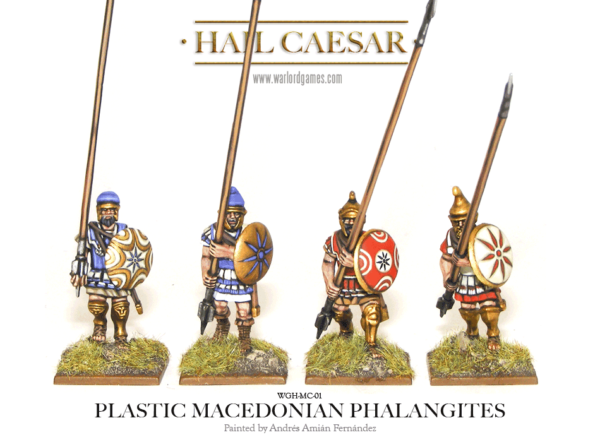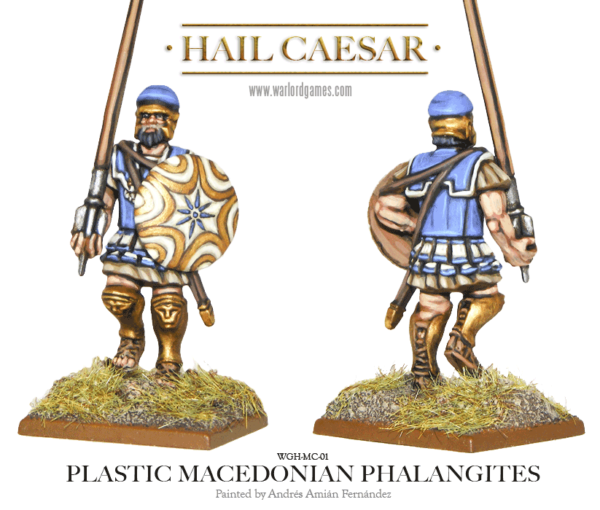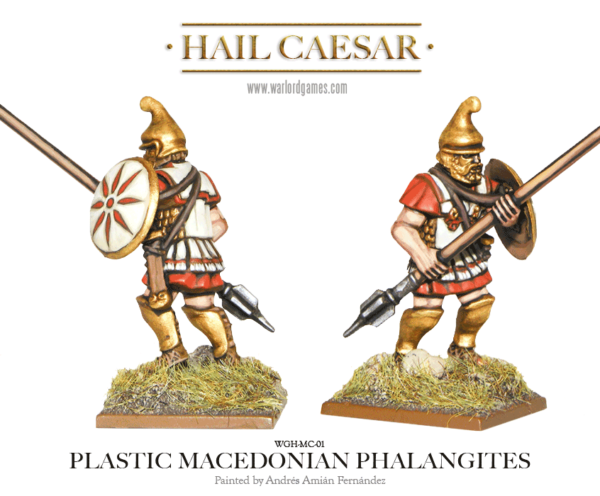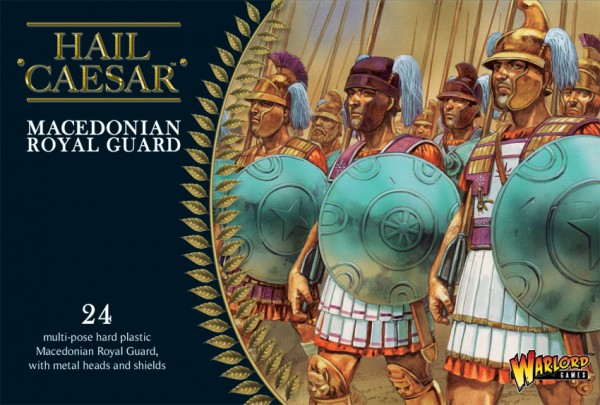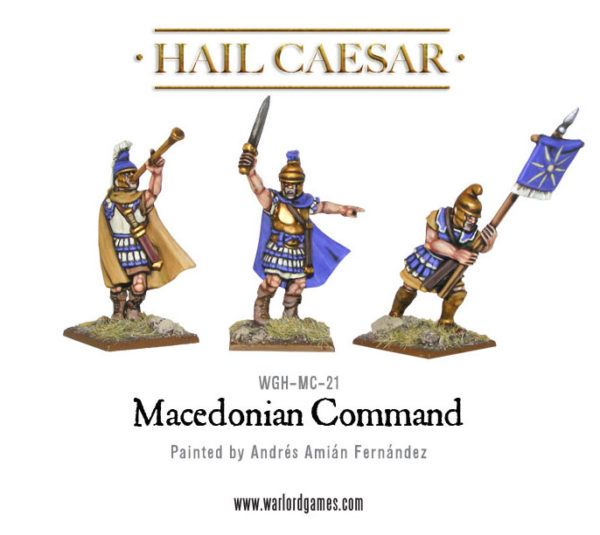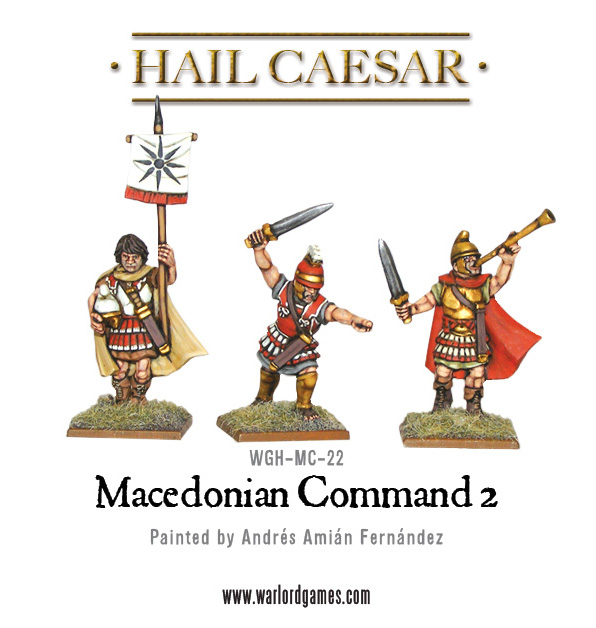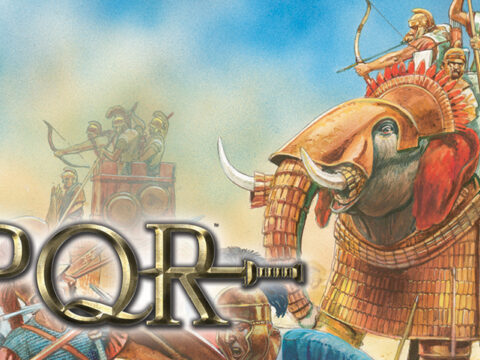With the release of our metal Macedonian Cavalry boxed set we’ve been asked by many of you for a pack containing kore riders so you can bulk out your units. Your wish is our command – here’s a pack of 3 Companion Cavalry with xyston spears at the ready…
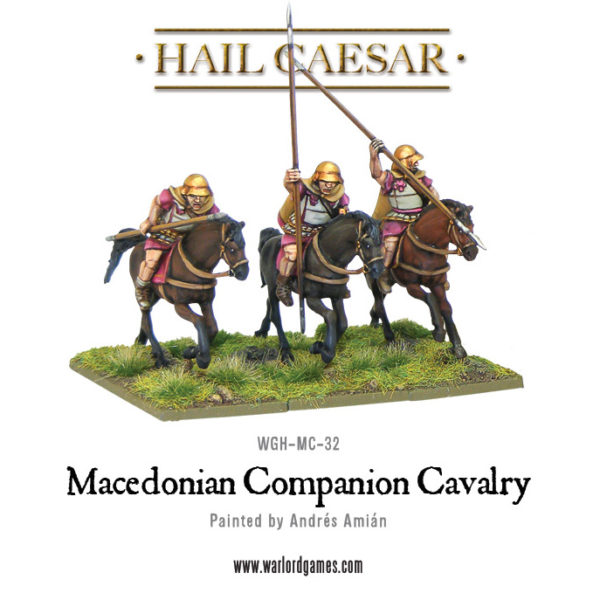
The metal boxed set will ably support your many pike phalanxes!
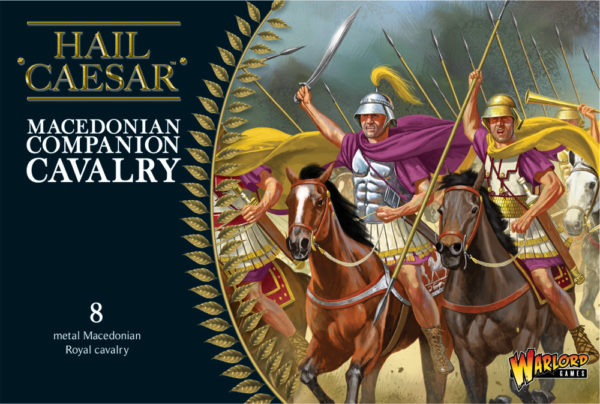
Alexander The Great fought wars of conquest from the shores of Anatolia to the foothills of the Himalayas. As King of Macedonia he defeated his fellow Greeks before invading and overthrowing the old Persian Empire. In the east he led his armies against the Scythian horsemen of the steppes and the mighty rulers of India. In all of his battles he relied upon an elite corps of cavalry called the Companions – hetairoi in Greek.
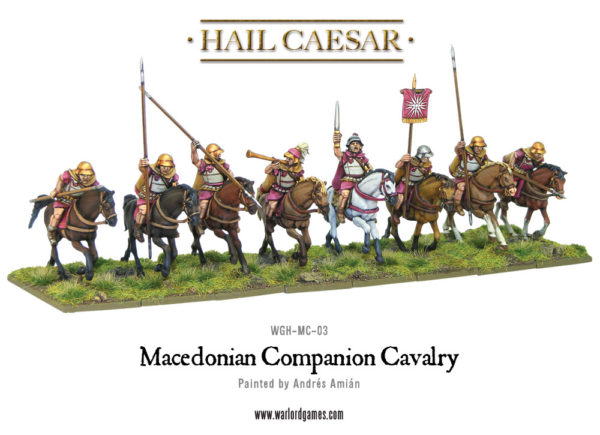
At the start of Alexander’s reign there were few of these tough, loyal cavalry – based upon the Royal Companions or bodyguard. As new lands were conquered the corps of Companions was expanded into a larger and even more effective fighting force. In battle, Alexander always led the cavalry and used them to deliver the decisive blow once his steady, pike-armed infantry had pinned the enemy. It was like a hammer and anvil – with Alexander wielding the Companion cavalry as the hammer!
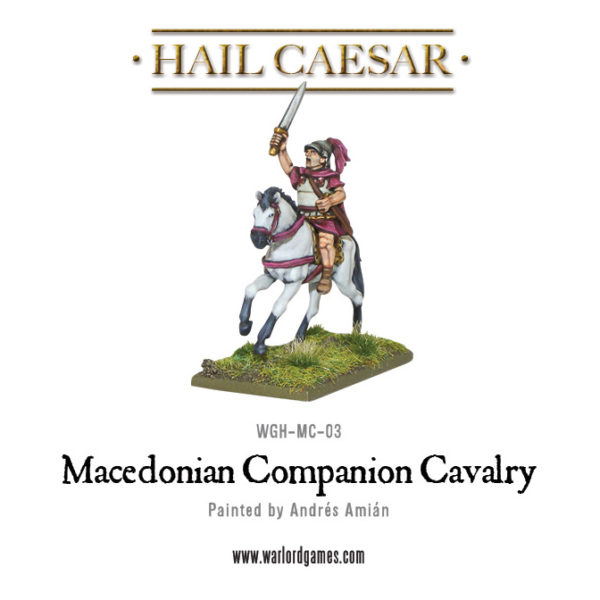
The Companions were the finest and most aggressive heavy cavalry of their time and they were armed with long, heavy spears designed to pierce armour and overcome enemy cavalrymen more accustomed to skirmishing or fencing with lighter weapons. Riders also carried weighty swords for fighting hand-to-hand and were protected by a bronze cuirass or linothorax style armour as worn by Greek infantry. They also wore bronze helmets – often the open-faced Boeotian style of helmet, which afforded good visibility and enabled the horsemen to more easily hear the commands of his officers than enclosed types of helmet. So armed the Companions overcame their enemies and won the empire and everlasting fame of Alexander the Great!
The box conatins 8 xyston-armed metal Macedonian Royal cavalry including command group. You may also want to add Alexander himself to lead them from our Macedonian range,
Alexander the Great son of Philip II of Macedon, tutored by Aristotle and undefeated in battle. In doing so he created one of the largest empires of the ancient world and for this feat he is considered one of history’s most successful commanders.
If you are new to the Macedonian army then what better place to start then with the Macedonian Phalangites.
Macedonian Phalangites
One of the finest sights in wargaming are the serried ranks of pike that fill Macedonian armies (and those of several other armies in the period). Our amazing plastic phalangites can be found here!
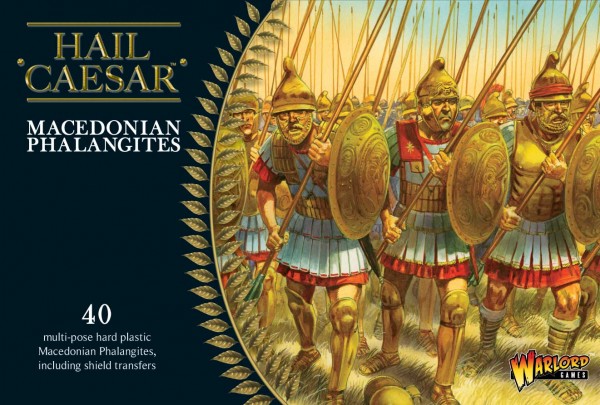
Philip II, father of Alexander the Great, spent much of his youth as a hostage at Thebes, where he studied under the renowned general Epaminondas, whose reforms were the basis for the phalanx. Phalangites were professional soldiers, and were among the first troops ever to be drilled, thereby allowing them to execute complex manoeuvres well beyond the reach of most other armies.
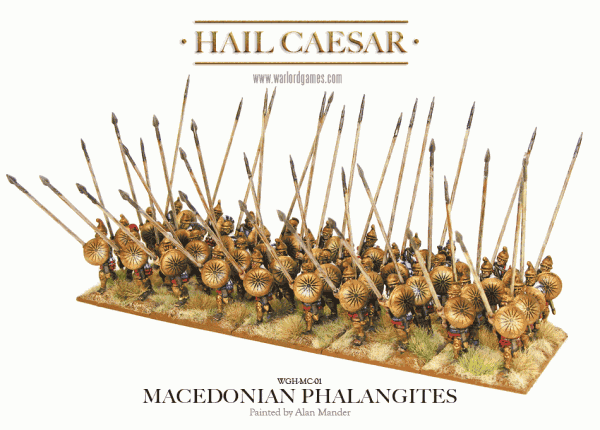
They fought packed in a close rectangular formation, typically eight men deep, with a leader at the head of each column and a secondary leader in the middle, so that the back rows could move off to the sides if more frontage was needed.
Each phalangite carried as his primary weapon a sarissa, a double-pointed pike over 6m (18 feet) in length. Before a battle the sarissa were carried in two pieces and then slid together when they were being used. At close range such large weapons were of little use, but an intact phalanx could easily keep its enemies at a distance; the weapons of the first five rows of men all projected beyond the front of the formation, so that there were more spearpoints than available targets at any given time. The secondary weapon was a short sword.
The Macedonian phalanx was not very different from the Hoplite phalanx of other Greeks states, save it was better trained, armed with the sarissa enabling it to outreach its competitors and stave off enemy cavalry, and wore far lighter armour enabling longer endurance and long fast forced marches, including the ability to sprint to close and overwhelm opposing positions and archers.
In essence, the range of their counter-weighted sarissa, allowed them superior mobility as well as superior defence and attack abilities despite the encumbrance disadvantages of the longer weapon once trained up to handling it in formation.
Centuries later, the Canton organised militia of Swiss Pikemen enjoyed similar advantages over less well trained contemporary militaries which were identically equipped, which emphasises the importance of training and unit cohesion in the scheme. In Phillip’s and Alexander’s time, the Macedonian phalanx had clear technical superiority.
In our Macedonian range we also have the Royal Guard! Silver Shields, White Shields and Brazen Shields – all elite hypaspist regiments that can be represented on the tabletop.
The Macedonian phalanx was one of the world’s greatest bodies of fighting men, and the best of them were amongst the very finest soldiers ever to march upon a battlefield. Under Alexander they conquered the known world and under his Successors they fought over the spoils of Empire.
One of the Macedonian army’s most decorated units, the Silver Shields (Argyraspides) served under Alexander the Great, their name derived from the silver-plated shields they bore. Chosen men, armed with the deadly sarissa pike, they were both feared and revered due to their long service and skill at arms. Following Alexander’s death in 323 BC, the Silver Shields followed the Thracian general Eumenes, in support of Alexander’s son. They infamously delivered their general to their enemy, Antigonus, after their baggage train containing 40 years worth of loot and their families was captured during the Battle of Gabiene in 316 BC. Antigonus duly rewarded them with service in Afghanistan and suicide missions – nobody likes a traitor!
The Antigonid phalanx was divided into two separate and distinct corps – the Brazen Shields (Chalkaspides) and the White Shields (Leukaspides). The troops in these divisions were, much like Alexander’s Royal Guard, picked men. Thracians and other ‘barbarians’ were rewarded with land in return for servitude in the phalanx. Unlike Alexander’s phalanx, the Antigonid Royal Guard units formed a larger percentage of the overall army strength, with over half of the army being formed from their strength in more than one battle.
This boxed set gives you everything you need to field one of these famous units. All you need to do is to paint their shields silver, bronze or white!
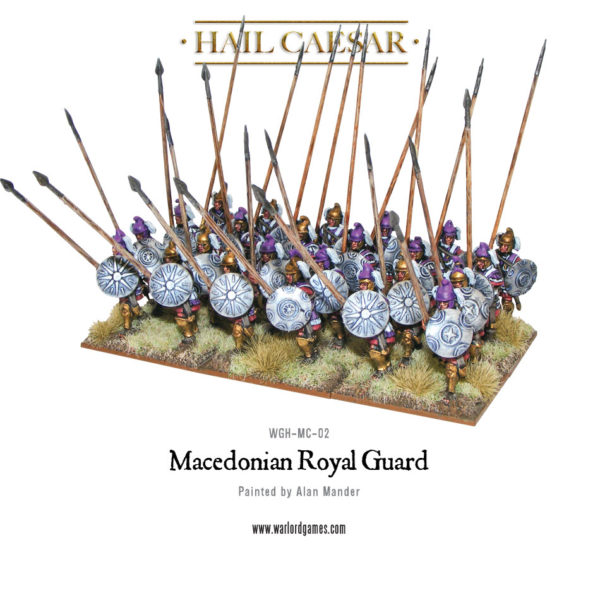
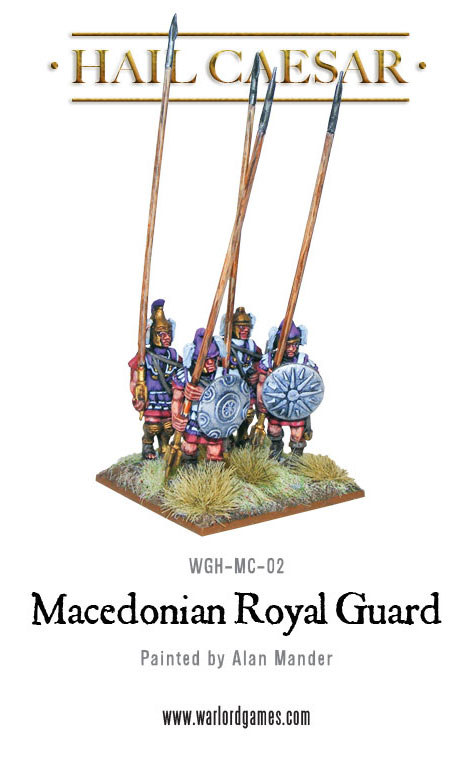
You can add these elite units to your army from our webstore here as well as the command groups you can see below.

